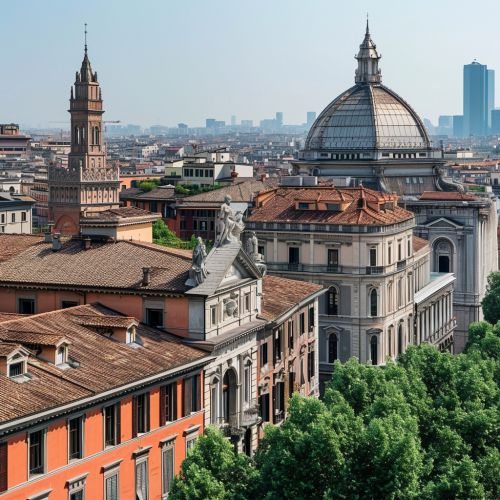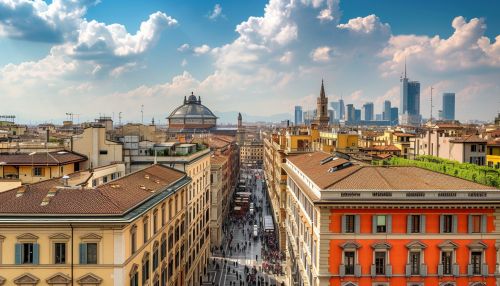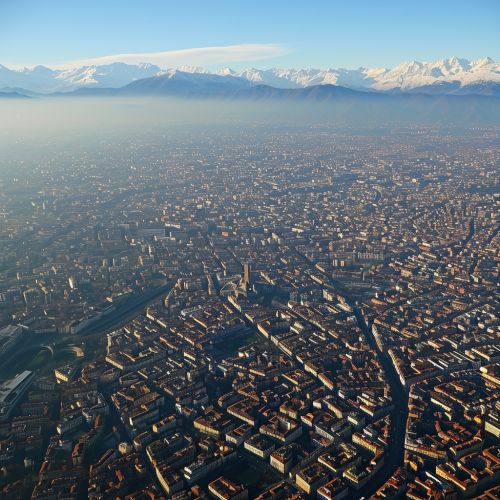Milan
History
Milan, known in Italian as Milano, is a city steeped in history. The city's origins date back to around 600 BC, when it was founded by the Celts. It was later conquered by the Romans in 222 BC and became the capital of the Western Roman Empire in 286 AD. During the Middle Ages, Milan was ruled by various dynasties, including the Visconti and the Sforza, who left a significant mark on the city's architecture and culture.
In the 19th century, Milan played a crucial role in the unification of Italy, serving as a hub for political and intellectual movements. The city was heavily bombed during World War II, but it quickly rebuilt and experienced an economic boom in the post-war years. Today, Milan is a global city, known for its contributions to fashion, design, art, and finance.


Geography
Milan is located in the northern part of Italy, in the Lombardy region. It is situated on the flat plains of the Po Valley, one of the most developed and productive areas of Italy. The city is crossed by several rivers and canals, the most important of which is the Naviglio Grande. Despite its location in a predominantly flat area, Milan is surrounded by the scenic landscapes of the Alps and the Apennines.
The city's climate is classified as humid subtropical, with hot, humid summers and cold, damp winters. It is also subject to the phenomenon known as "nebbia" (fog), especially in winter, which can create a unique and atmospheric environment in the city.

Economy
Milan is the economic heart of Italy and one of the wealthiest cities in Europe. It is home to the country's stock exchange, the Borsa Italiana, and many multinational corporations. The city is a global leader in sectors such as fashion, design, finance, telecommunications, media, and manufacturing.
Milan is also known for its thriving small and medium-sized enterprises, particularly in the fashion and design sectors. These businesses contribute significantly to the city's economy and have helped to establish Milan as a global fashion capital.
The city's economy is also supported by tourism, with millions of visitors each year attracted by its cultural heritage, fashion events, and international fairs and exhibitions.
Culture
Milan is a city of rich cultural heritage. It is home to numerous museums and art galleries, including the Brera Picture Gallery and the Museum of the Twentieth Century, which house significant collections of Italian and international art.
The city is also known for its music and performing arts scene. The La Scala opera house is one of the most prestigious in the world, hosting performances by internationally renowned artists. Milan also has a vibrant contemporary music scene, with numerous concerts and music festivals taking place throughout the year.
In addition, Milan is famous for its fashion and design culture. The city hosts the Milan Fashion Week and the Milan Furniture Fair, which are among the most important events in the international fashion and design calendars.
Architecture
Milan's architecture reflects its rich history and diverse cultural influences. The city's architectural landmarks range from the Roman ruins of the Imperial Palace to the Gothic splendor of the Duomo, the Renaissance elegance of the Castello Sforzesco, and the modernist designs of the Pirelli Tower.
The city is also known for its innovative contemporary architecture, with projects such as the Porta Nuova and CityLife districts showcasing the work of internationally acclaimed architects.
In addition, Milan is home to numerous historic palaces, churches, and villas, as well as modernist and postmodernist buildings, which contribute to the city's unique architectural landscape.
Education
Milan is a major center for higher education in Italy. The city is home to several prestigious universities, including the Università degli Studi di Milano, the Politecnico di Milano, and the Università Bocconi, which are renowned for their programs in fields such as law, medicine, engineering, and economics.
The city also hosts numerous research institutions and think tanks, making it a hub for scientific and intellectual activity. In addition, Milan's education sector is complemented by a wide range of cultural and artistic institutions, providing a rich and diverse learning environment.
Cuisine
Milanese cuisine is characterized by its simplicity and the use of high-quality ingredients. The city is famous for dishes such as "risotto alla Milanese", a creamy rice dish flavored with saffron, and "cotoletta alla Milanese", a breaded veal cutlet.
Milan is also known for its pastries and desserts, including "panettone", a traditional Christmas cake, and "cannoli", a sweet pastry filled with ricotta cheese. The city's culinary scene is complemented by a vibrant wine culture, with numerous wine bars and enotecas offering a wide selection of Italian and international wines.
